Silvertone 1443 Bass (1/2)




This is a project that took a long time, mainly due to the lacquer sunburst, which took several tries to get right. In the end, I even 'bursted the back of the neck. While it looks like an old Silvertone, it is actually thoroughly modern inside. 90's Danelectro lipstick pickups - the good ones, wired in series with a selector switch like they should be.
A fully active 3-band eq occupies all the control knobs: volume, bass, mid, treble, boost/cut. No redundant volume controls. Pull the volume knob to switch to dead-battery mode. Solid poplar body, full-scale Fender-style neck, headstock cut to classic Silvertone profile, with jewel-like oversized chrome logo. Radio Shack knobs are pretty close to the originals, on a Masonite pickguard. Fender pickup cover over a Fender-style bridge is as close as I can get to the original appearance while using Leo's much better bridge design.

Pickup locations modified to mathematically match a Rickenbacker, and guess what? It sounds remarkably similar, albeit with much lower output. The pickguard is actually the guitar profile, not the bass, which is much less shapely, and would place the pickups much nearer the bridge. Plays like a good Jazz bass, sounds like a cross between a Ric and a Danelectro - really spanky from the narrow lipstick pickups. Rotosound 66 strings add even more zing.
Unfortunately, this beauty is a 'hangar queen' - all that lacquer is taking forever to fully cure hard, so she spends most of her time hanging from a hook by a tuner, you can see the string in the picture.

As you can see, a 1443 has a tortoiseshell pickguard, while a 1442 has a white pickguard. So technically, mine is a 1442½ or maybe a 1442¾. The price works out to about $1000 today, or the price of a Mexican Fender.
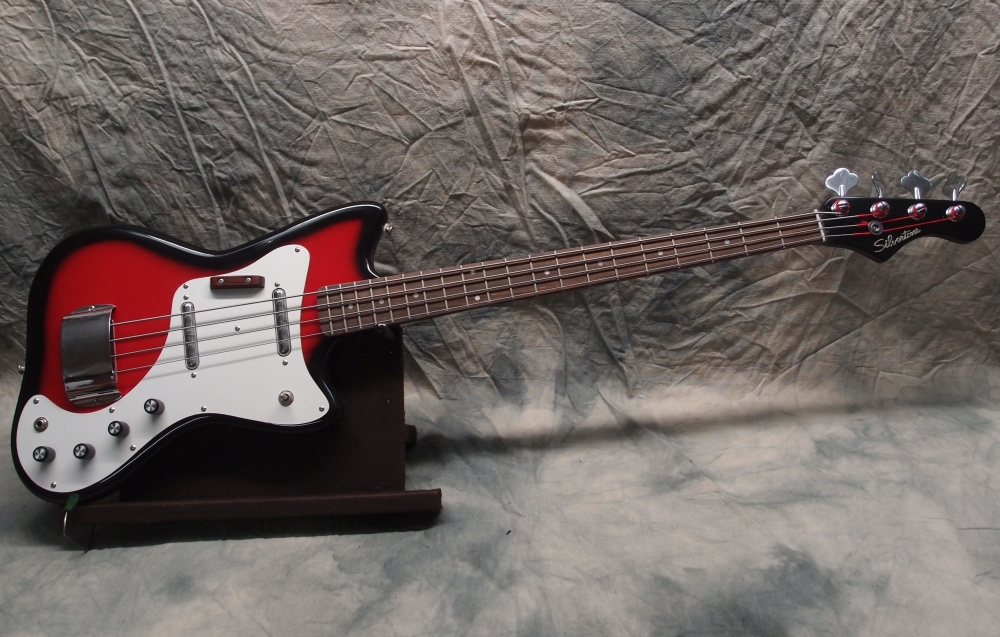
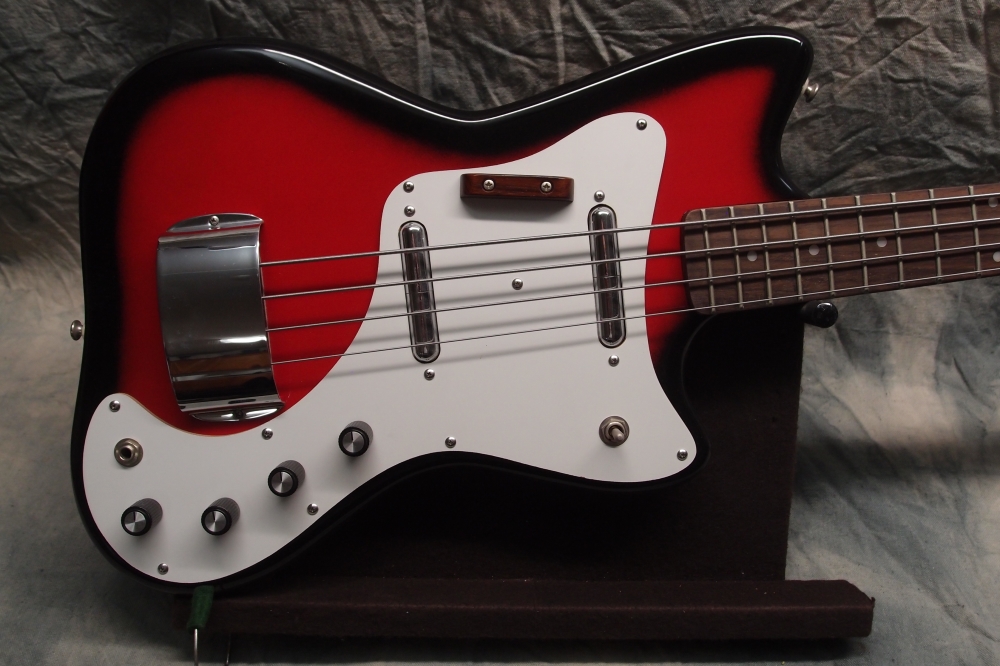
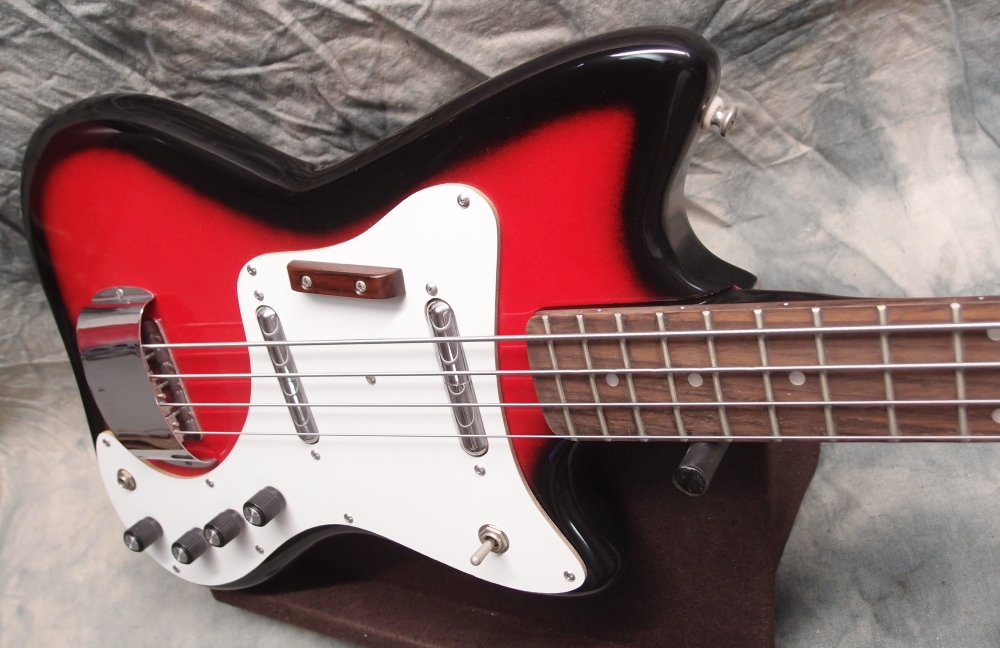
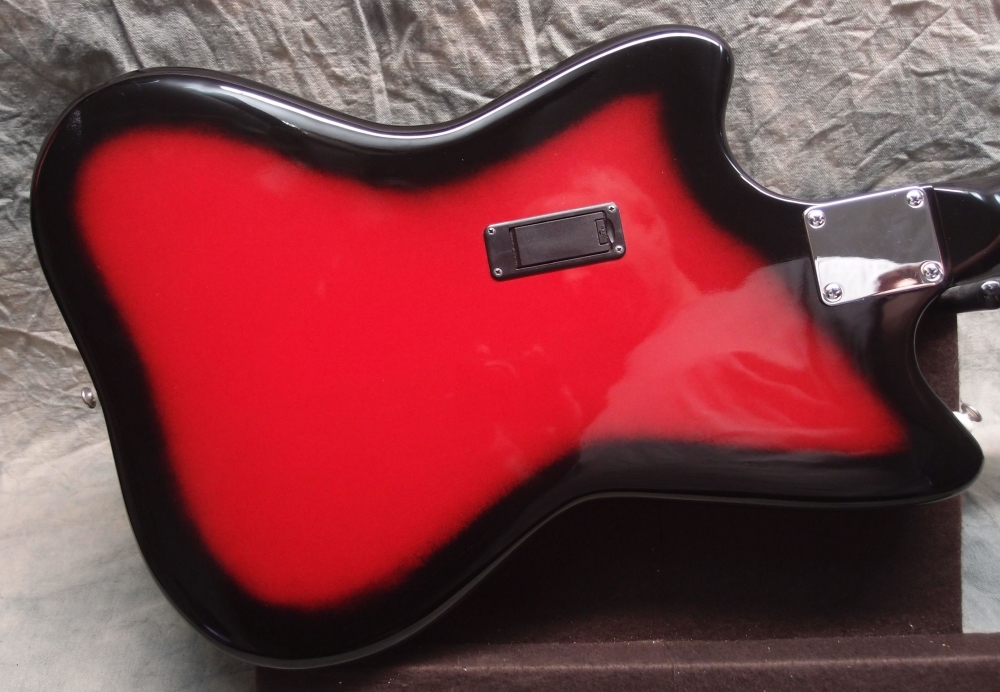
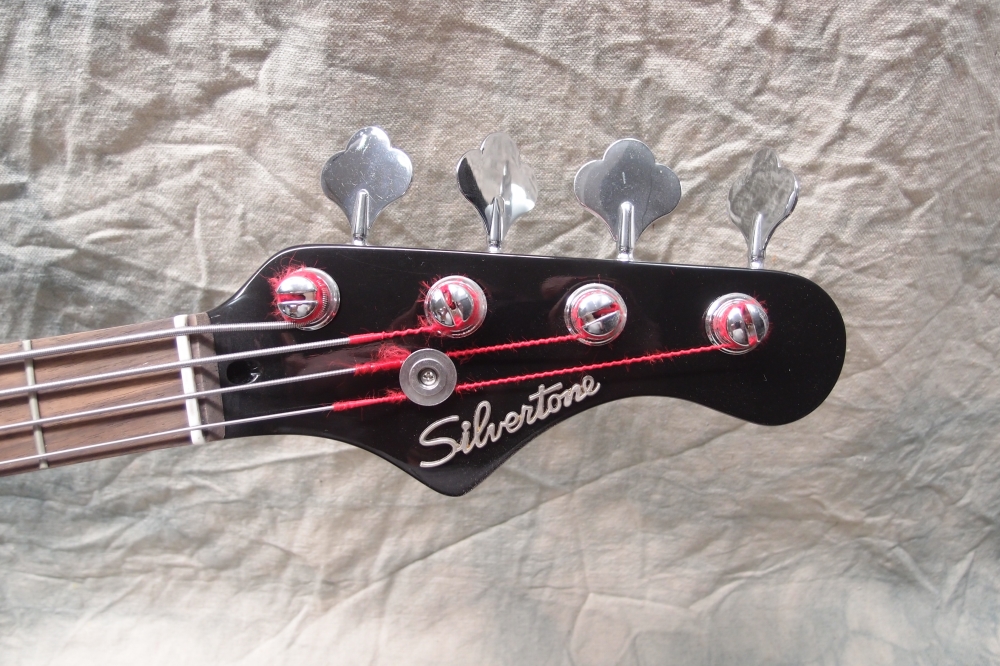
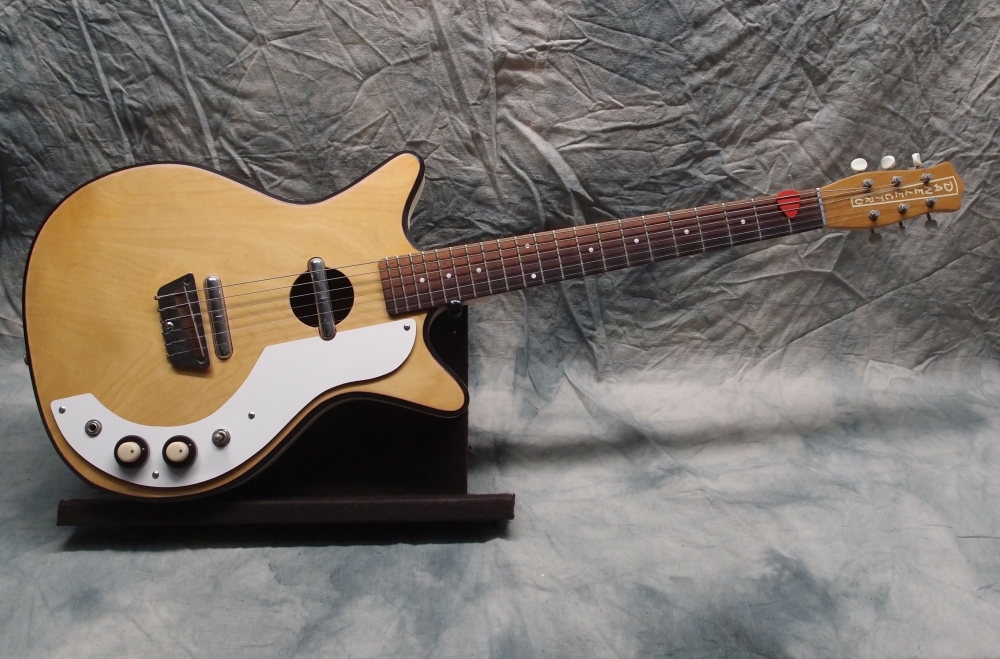
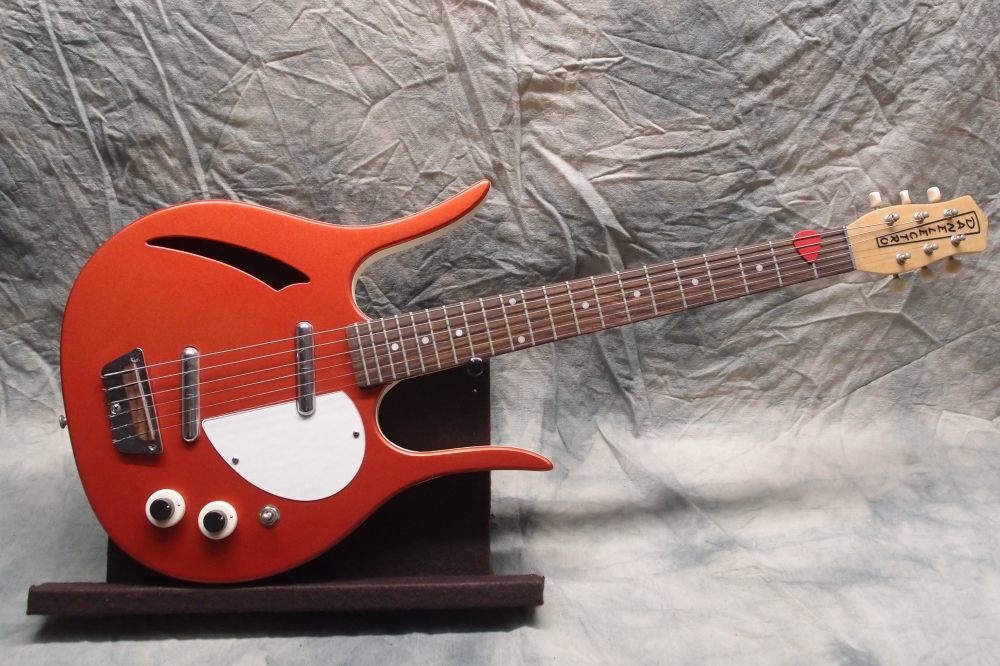
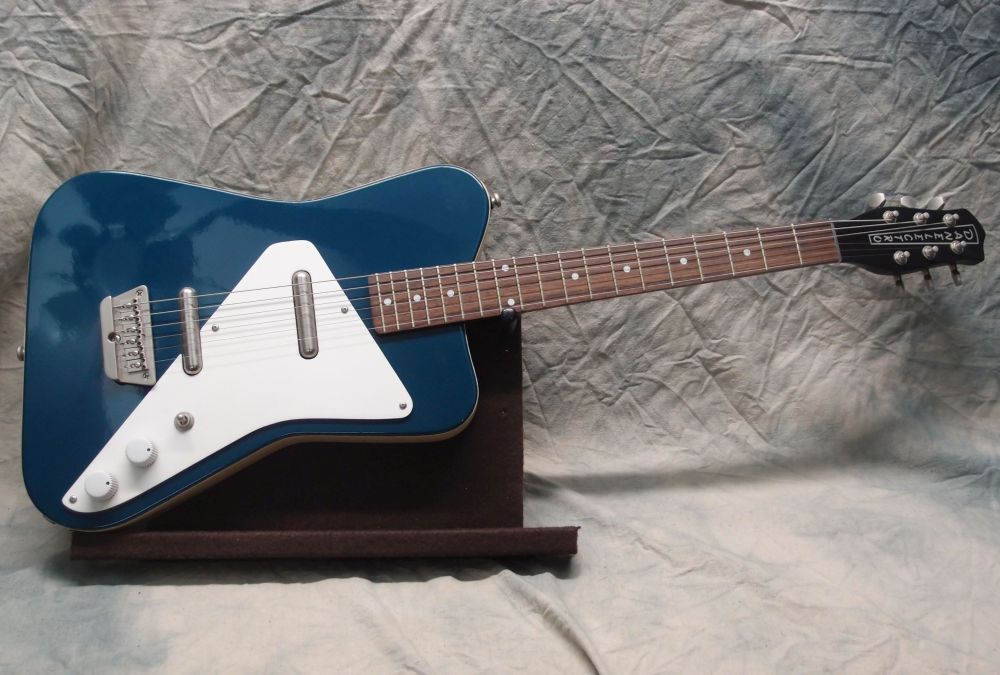
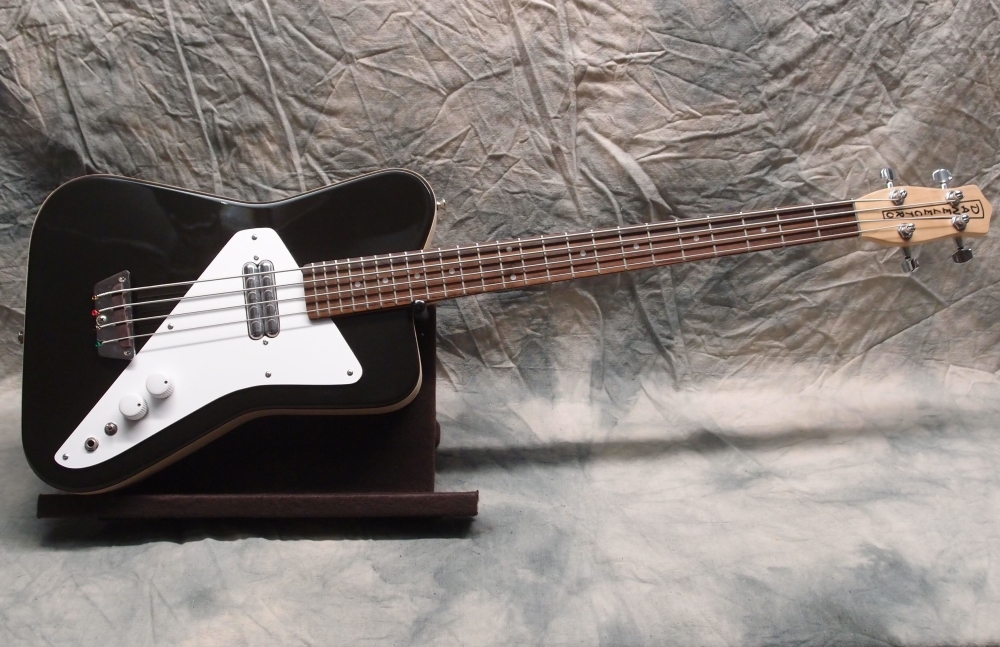
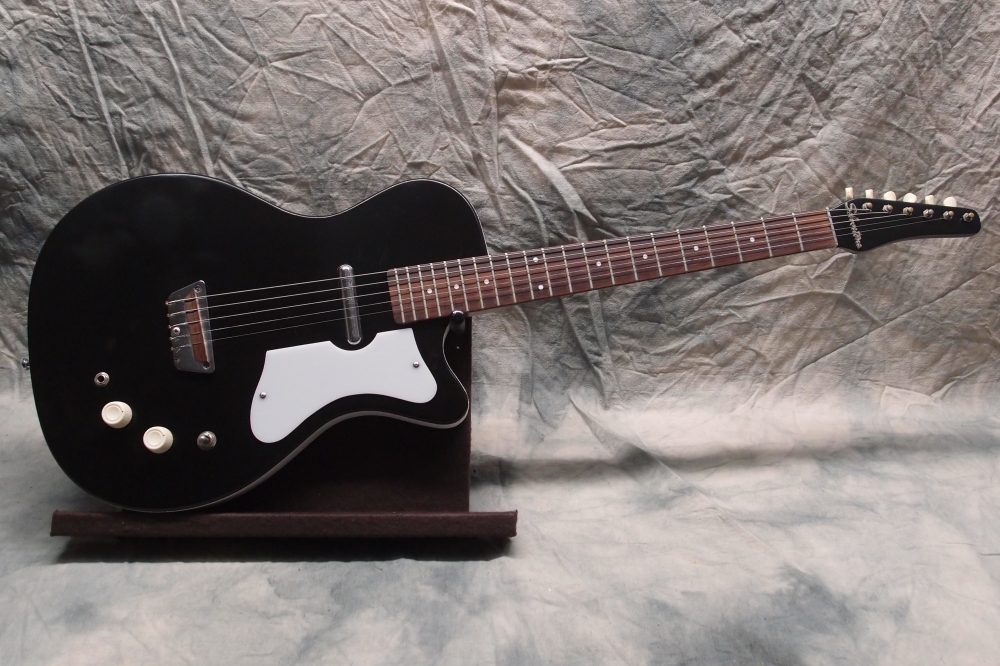
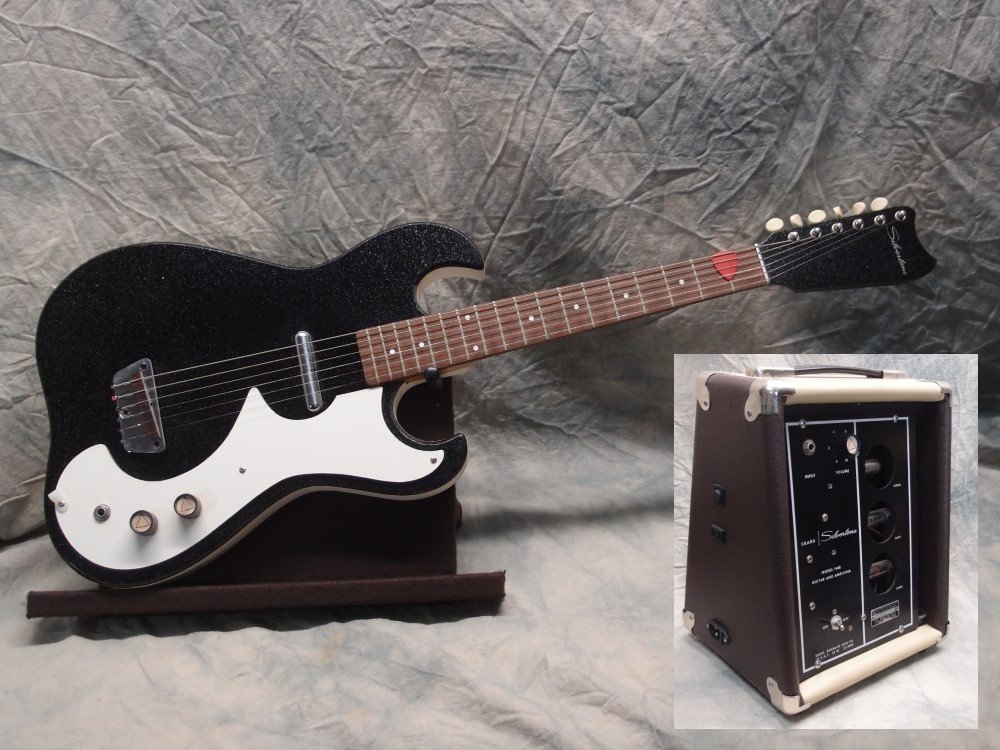
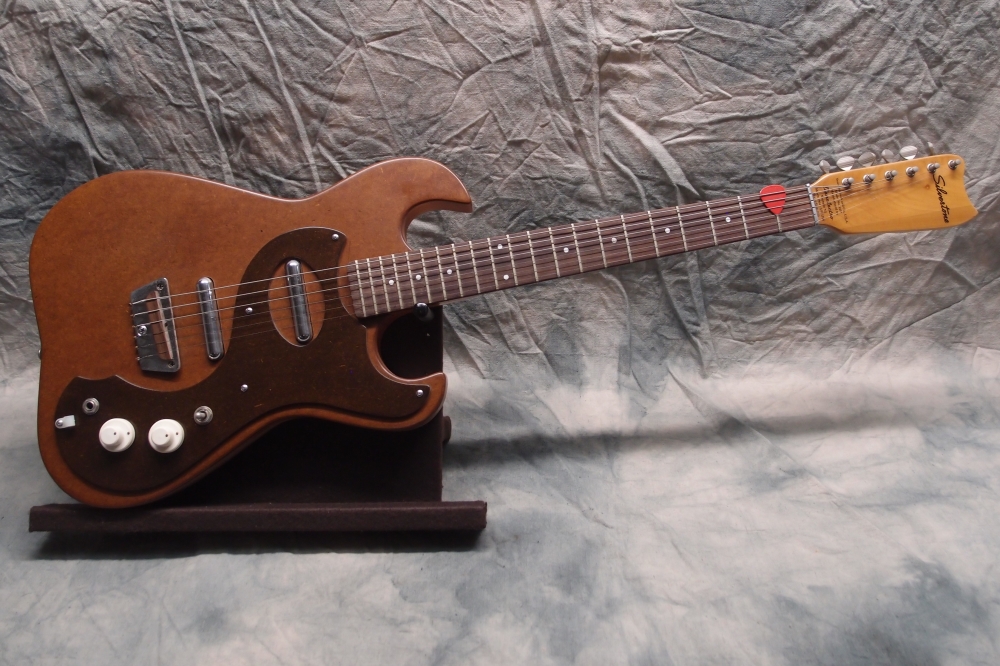
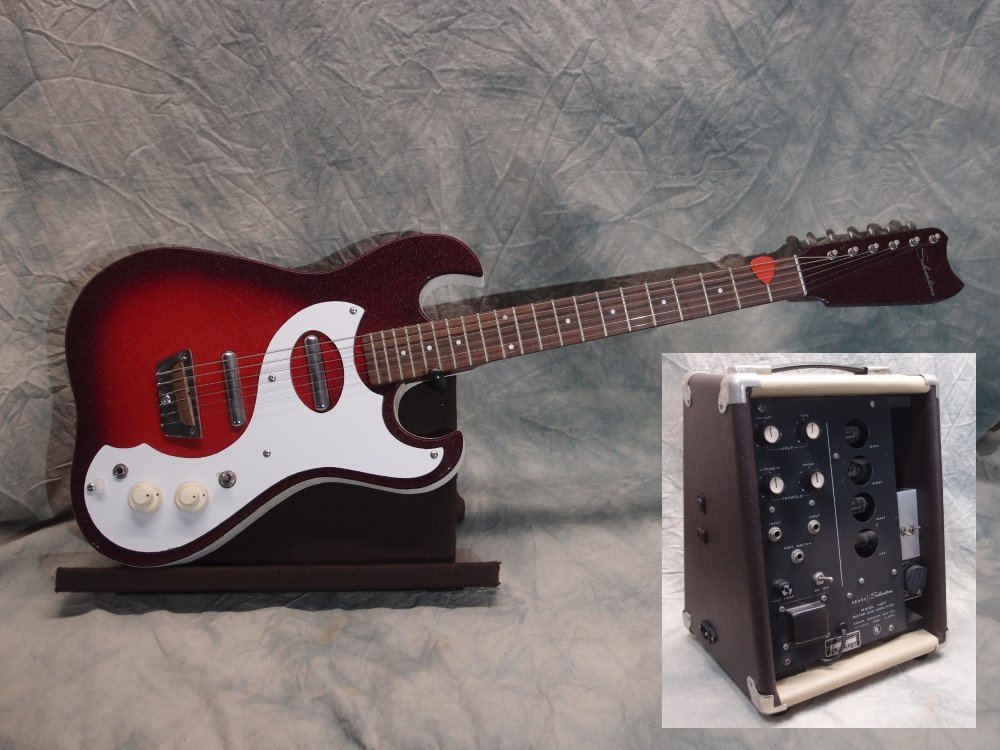
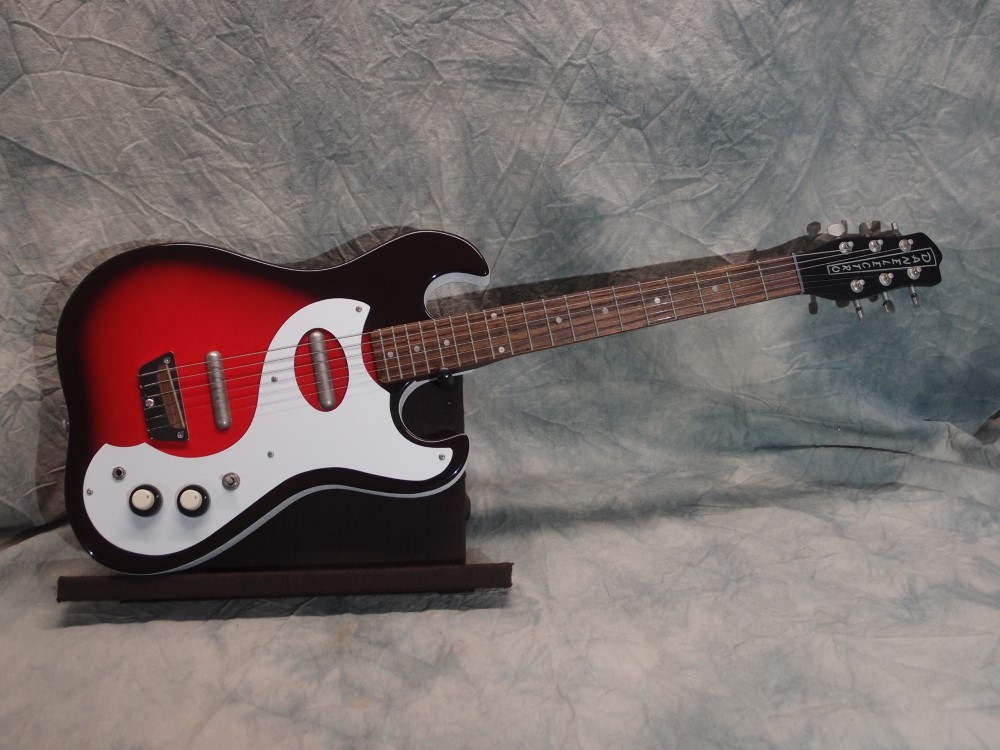
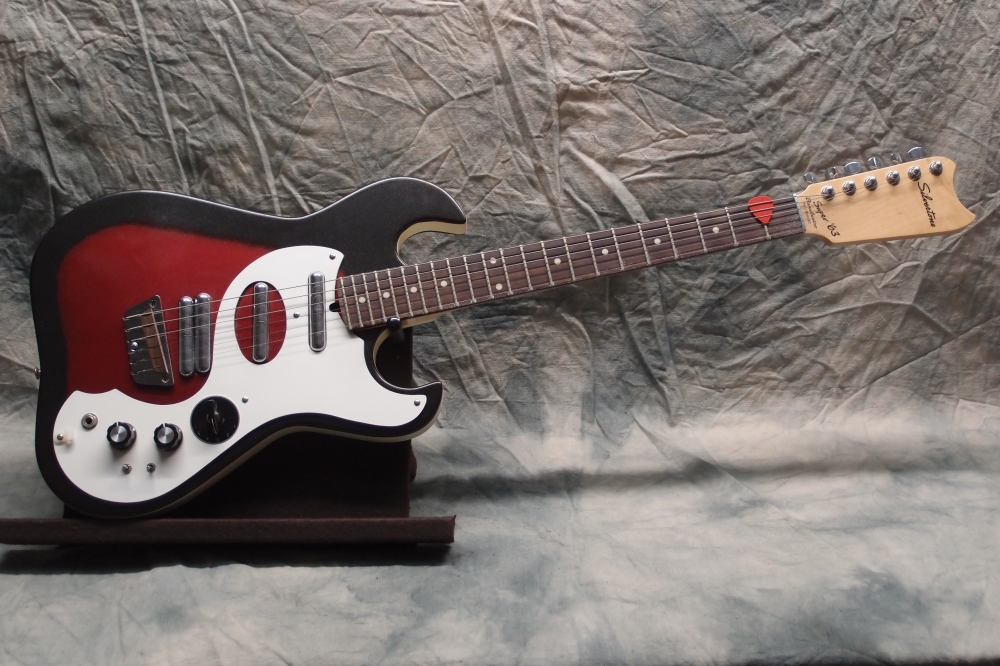
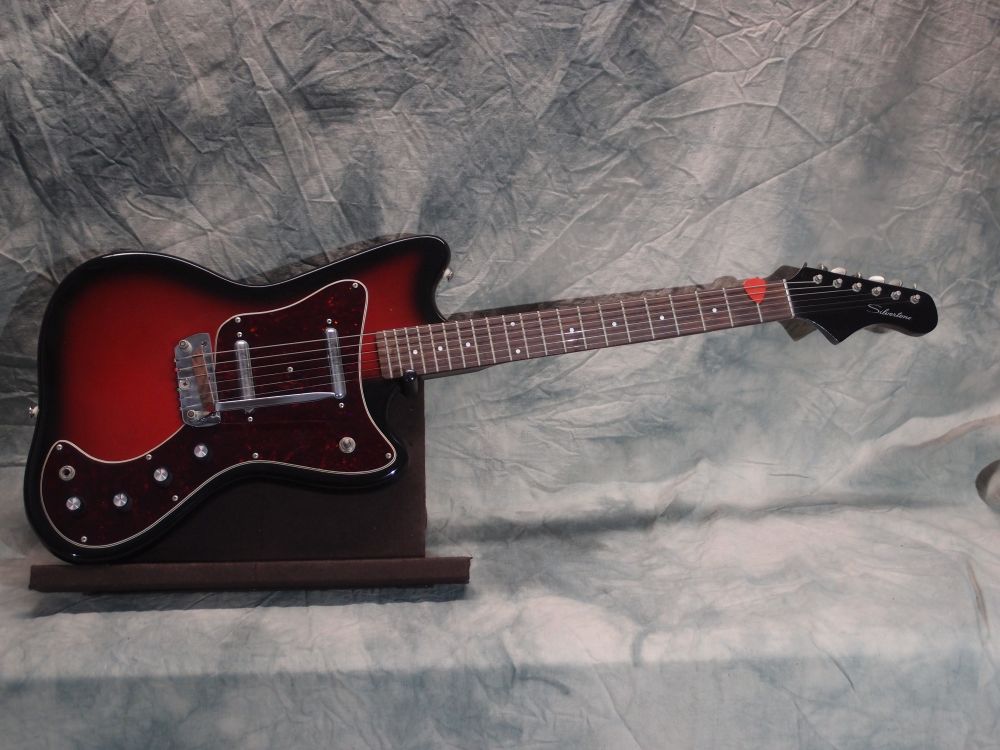
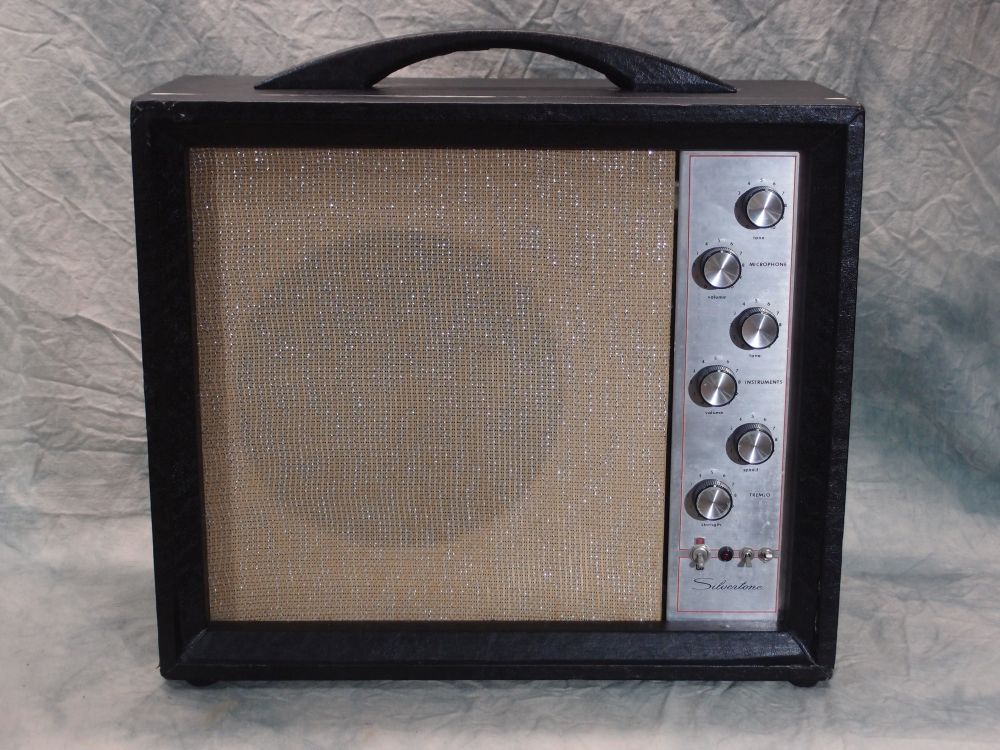
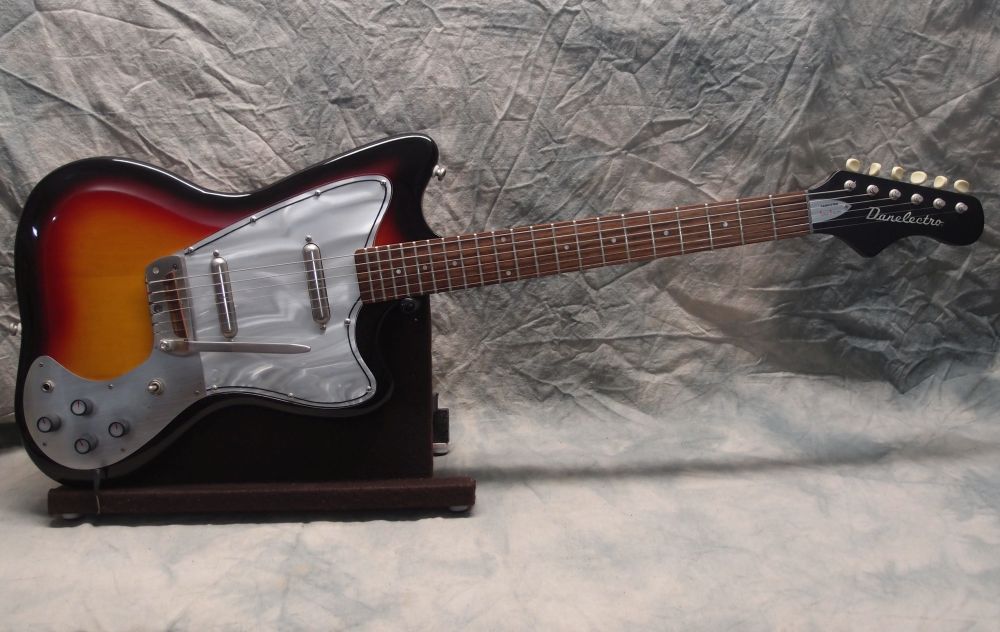
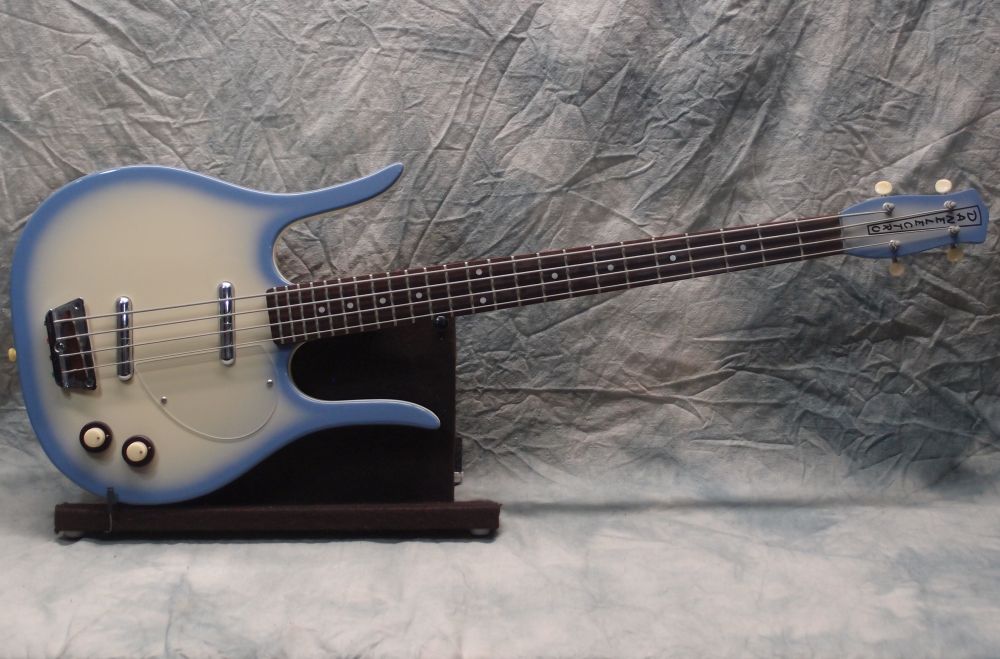
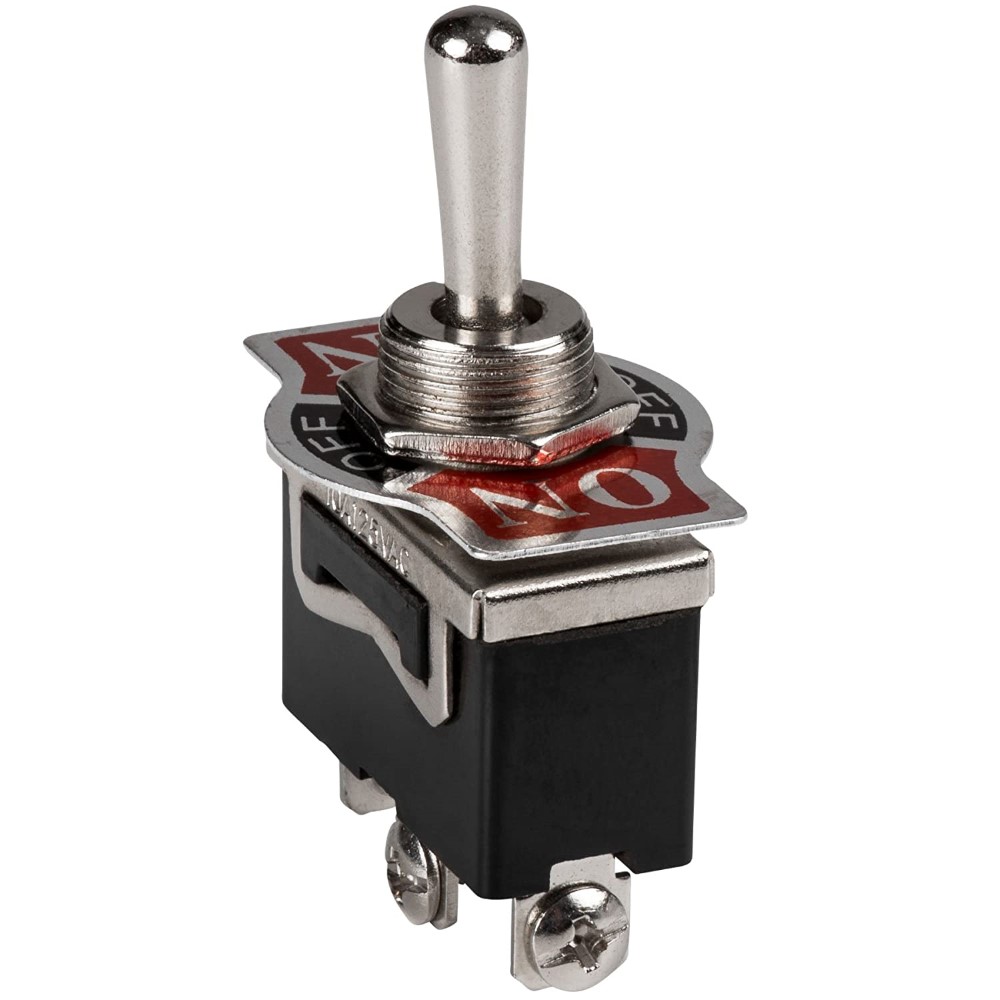

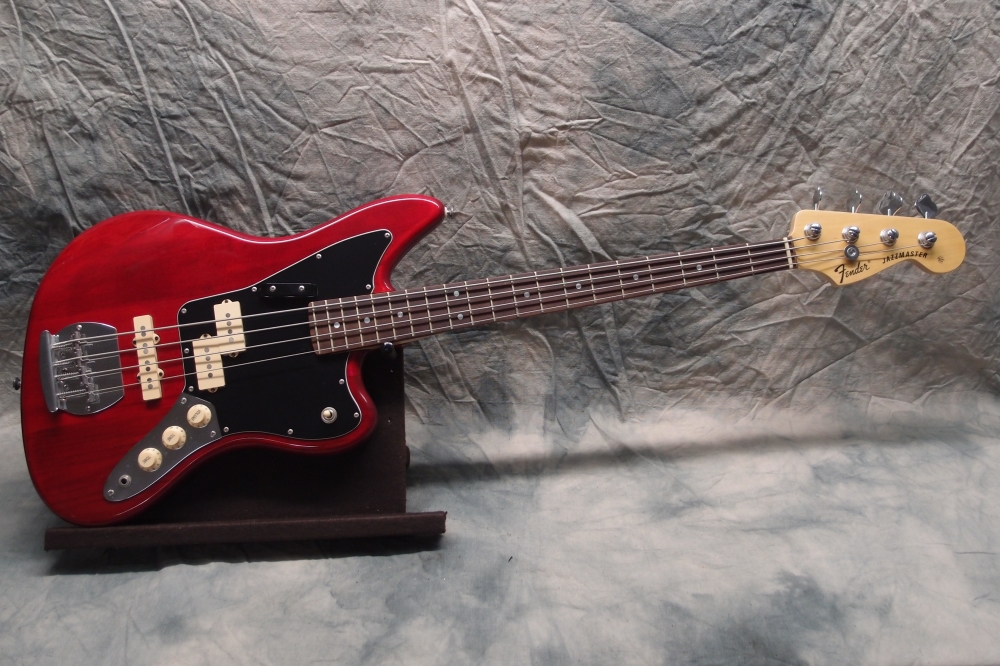
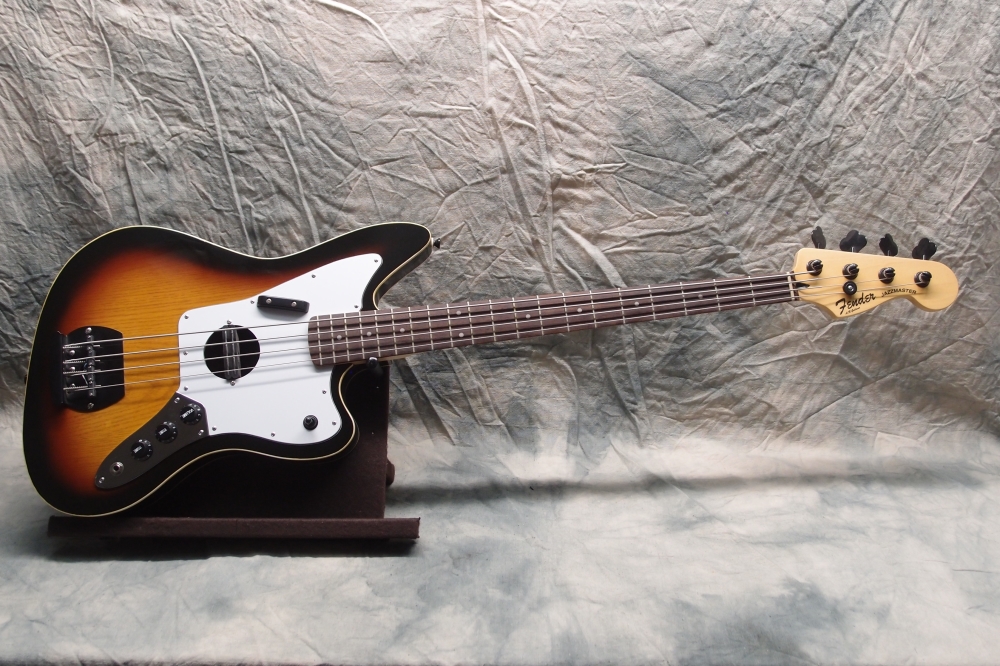
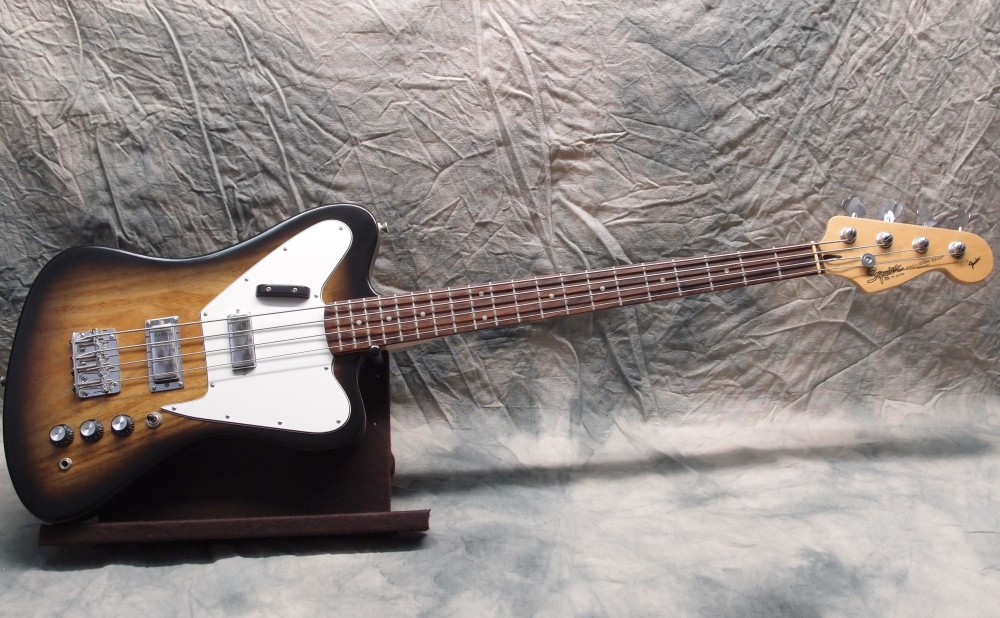

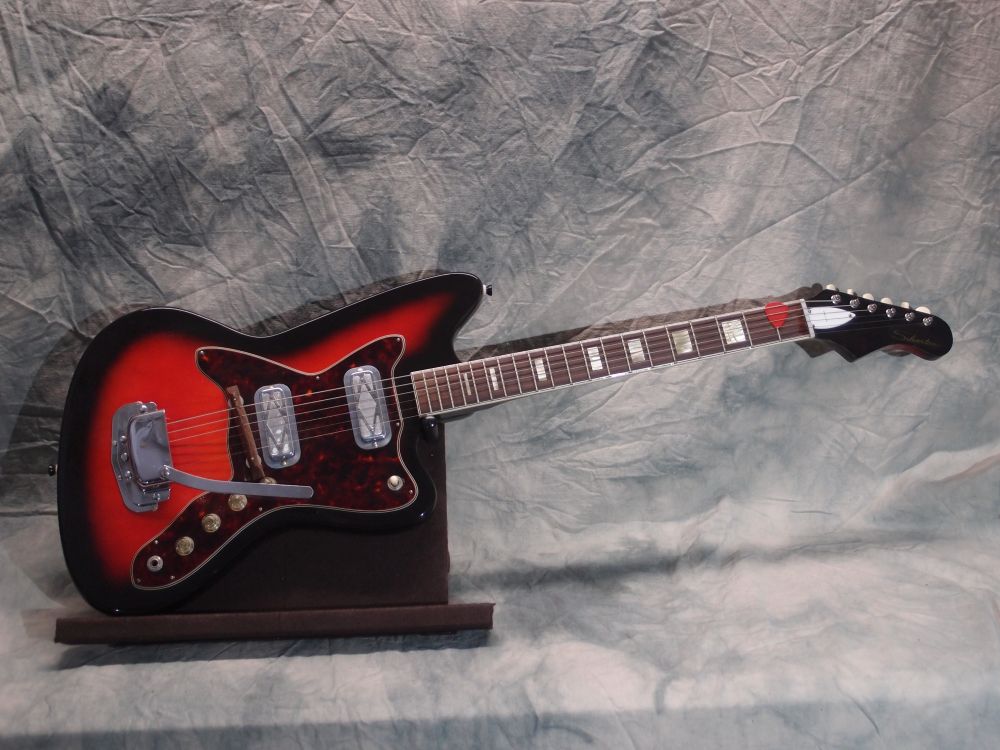
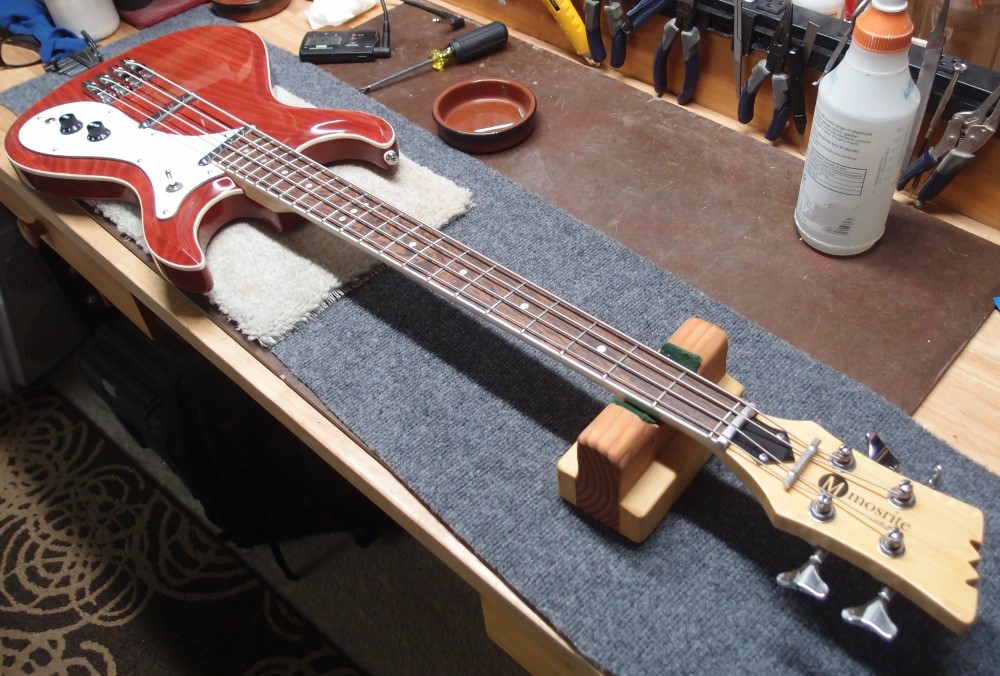
Rick:
April 8, 2019 at 11:22 PM
Very nice work.
Seems more like a 1442-1/2...